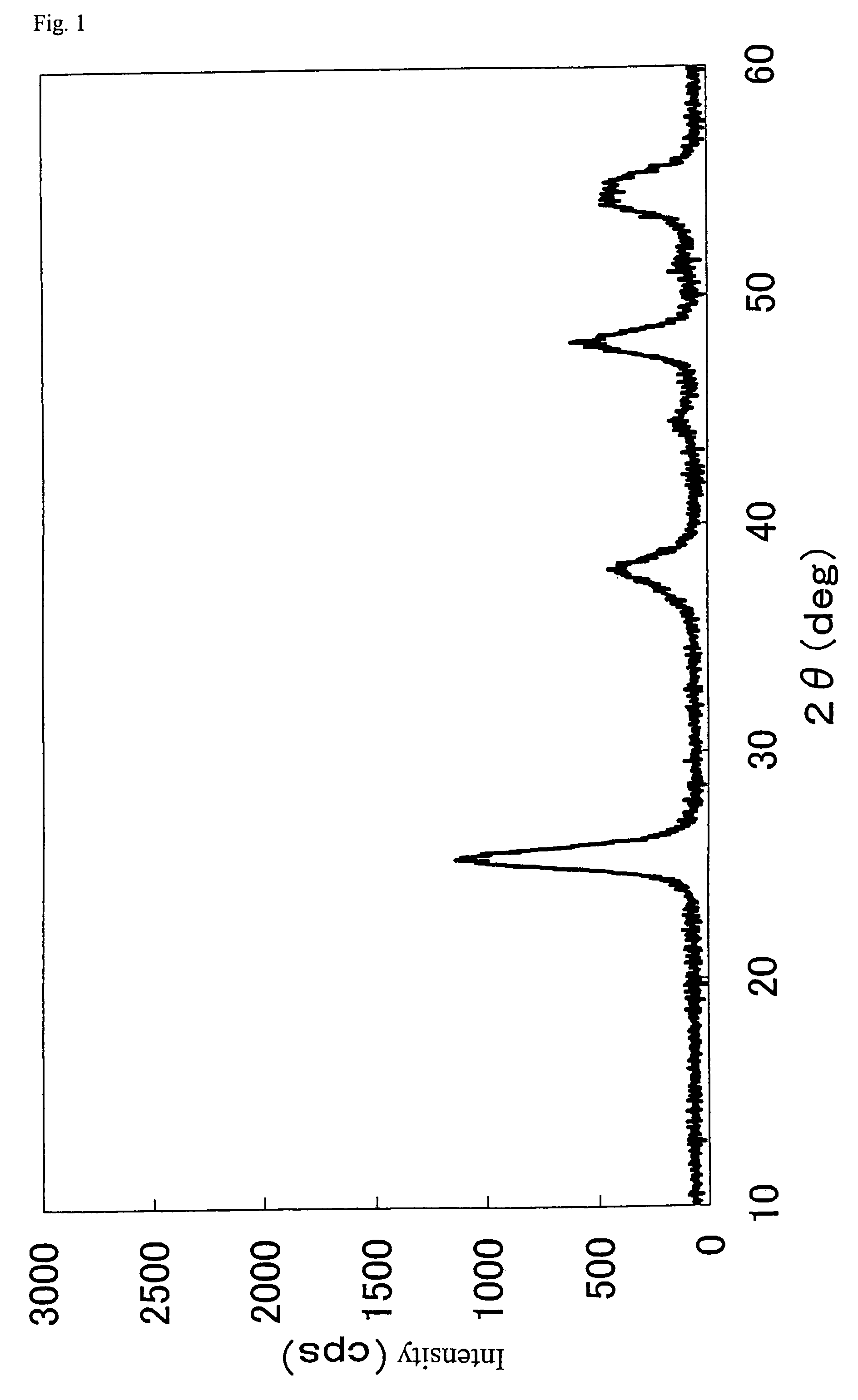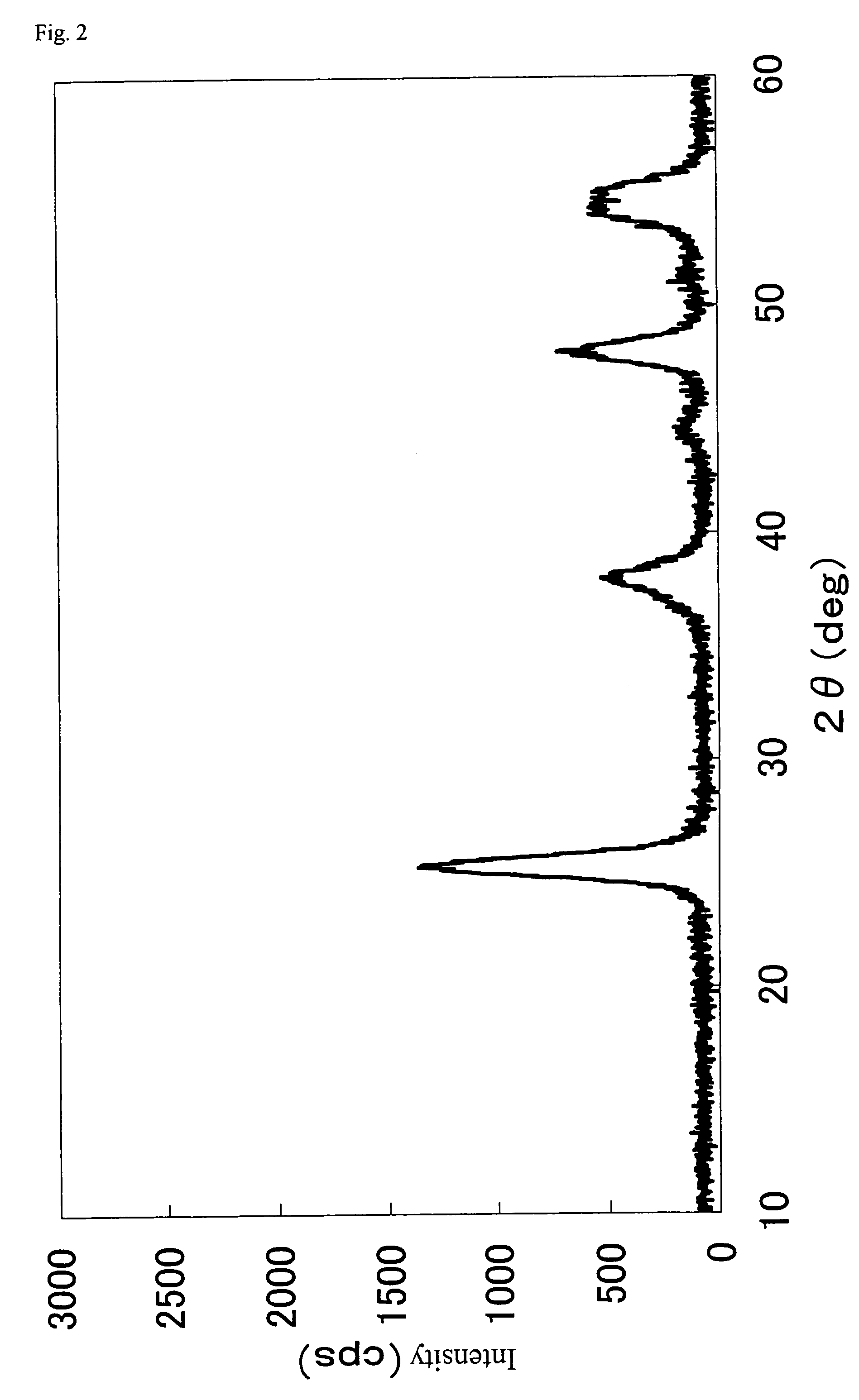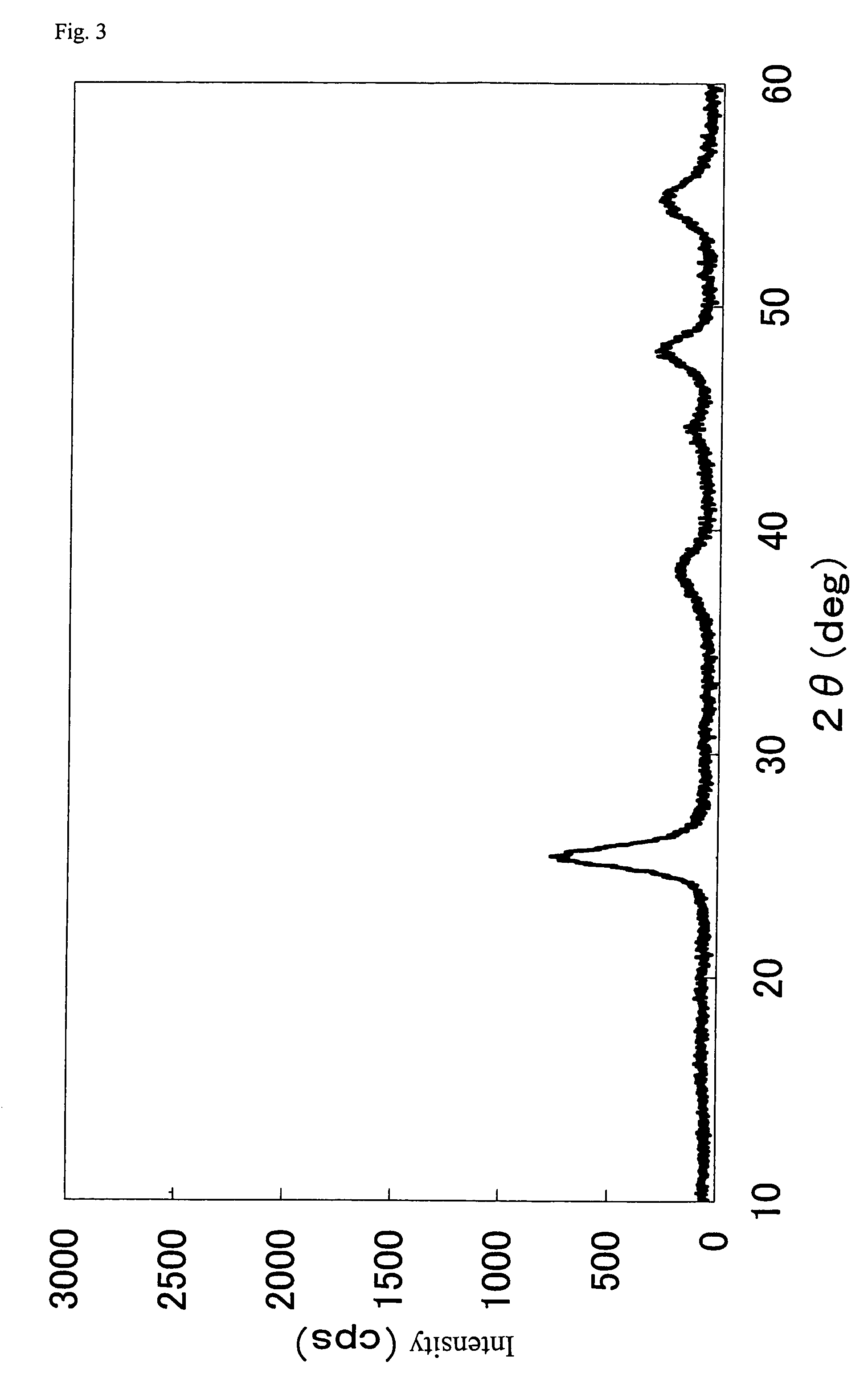Method for treating exhaust gas
a technology for treating exhaust gas and exhaust gas, which is applied in the direction of dispersed particle separation, separation processes, mercury compounds, etc., can solve the problems of difficult removal of mercury, substantial cost of active carbon, and the disposal of used active carbon
- Summary
- Abstract
- Description
- Claims
- Application Information
AI Technical Summary
Benefits of technology
Problems solved by technology
Method used
Image
Examples
production example 1-1
Production of Ti—V-Containing Catalyst (1)
[0117]First, a Ti—Si—Mo composite oxide was prepared as follows: To a mixed solution of 6.7 kg of a silica sol (“SNOWTEX-30” manufactured by Nissan Chemical Industries, Ltd., containing 30 wt % in terms of SiO2), 103 kg of industrial aqueous ammonia (containing 25 wt % NH3), and 58 liter of water was added 2.25 kg of molybdic acid, and the mixture was stirred well to prepare a uniform solution. To this solution was gradually added 228 liter of a solution of titanyl sulfate in sulfuric acid (manufactured by Tayca Corporation: containing 70 g / liter as TiO2, 287 g / liter as H2SO4) dropwise while stirring, to produce precipitates, and an appropriate amount of aqueous ammonia was added to adjust a pH to 4. This coprecipitated slurry was allowed to stand for about 40 hours, filtered, sufficiently washed with water, and dried at 150° C. for 1 hour. Further, this was calcined at 500° C. for 5 hours under air atmosphere to obtain a Ti—Si—Mo composite ...
production example 1-2
Production of Ti—V-Containing Catalyst (2)
[0121]First, a Ti—Mo composite oxide was prepared as follows: 1.6 kg of molybdic acid was added to a mixed solution of 120 kg of industrial aqueous ammonia (containing 25 wt % NH3) and 140 liter of water, and the mixture was stirred well to completely dissolve molybdic acid, to prepare a uniform solution. To this solution was gradually added dropwise 266 liter of a solution of titanyl sulfate in sulfuric acid (manufactured by Tayca Corporation: 70 g / liter as TiO2, 287 g / liter as H2SO4), to produce precipitates, and an appropriate amount of aqueous ammonia was added to adjust a pH to 4. This coprecipitated slurry was allowed to stand for about 40 hours, filtered, washed sufficiently with water and dried at 150° C. for 1 hour. Further, this was calcined at 500° C. for 5 hours under air atmosphere to obtain a Ti—Mo composite oxide powder. A composition of the Ti—Mo composite oxide powder was titanium oxide:molybdenum oxide=93:7 as expressed by ...
production example 1-3
Production of Ti—V-Containing Catalyst (3)
[0125]First, a Ti—Si-composite oxide was prepared as follows: 10 kg of a silica sol (“SNOWTEX-30” manufactured by Nissan Chemical Industries, Ltd.; containing 30 wt % in terms of SiO2), 104 kg of industrial aqueous ammonia (containing 25 wt % NH3) and 73 liter of water were mixed, to prepare a uniform solution. To this solution was gradually added 243 liter of a solution of titanyl sulfate in sulfuric acid (manufactured by Tayca Corporation: containing 70 g / liter as TiO2, 287 g / liter as H2SO4) dropwise while stirring. The resulting slurry was allowed to stand for 20 hours, filtered, washed sufficiency with water and dried at 150° C. for 1 hour. Further, this was calcined at 550° C. for 5 hours under air atmosphere to obtain a Ti—Si composite oxide powder. A composition of the Ti—Si-composite oxide powder was titanium oxide:silicon oxide=85:15 as expressed by a weight ratio in terms of oxide.
PUM
| Property | Measurement | Unit |
|---|---|---|
| temperature | aaaaa | aaaaa |
| temperature | aaaaa | aaaaa |
| temperature | aaaaa | aaaaa |
Abstract
Description
Claims
Application Information
 Login to View More
Login to View More - R&D
- Intellectual Property
- Life Sciences
- Materials
- Tech Scout
- Unparalleled Data Quality
- Higher Quality Content
- 60% Fewer Hallucinations
Browse by: Latest US Patents, China's latest patents, Technical Efficacy Thesaurus, Application Domain, Technology Topic, Popular Technical Reports.
© 2025 PatSnap. All rights reserved.Legal|Privacy policy|Modern Slavery Act Transparency Statement|Sitemap|About US| Contact US: help@patsnap.com



